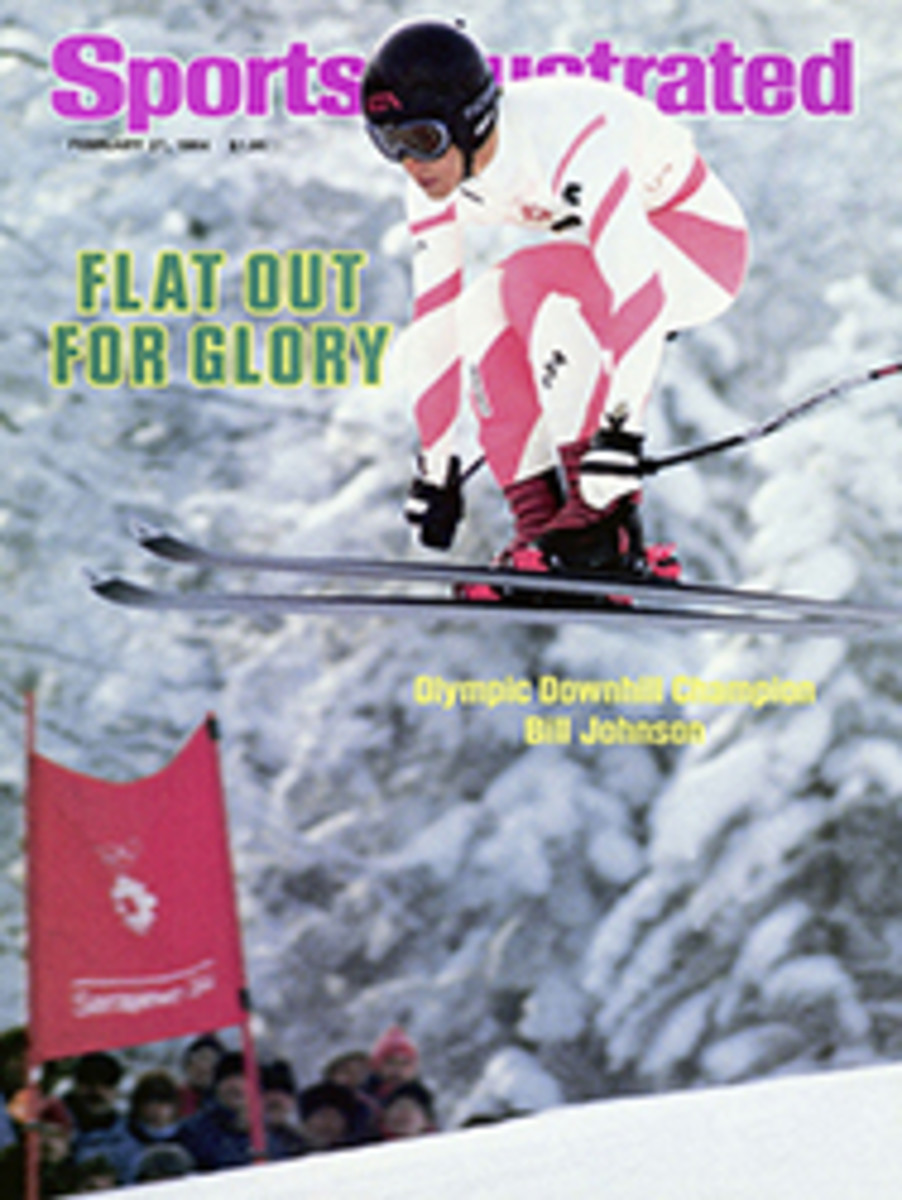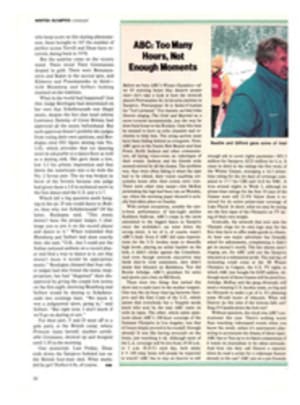
The Attack Of The Barber Poles And Hematomas
Oh, those tangerine-colored, hot pink-striped, flaming yellow, skintight racing suits. They were all the rage at the Winter Games, a sort of catch-me-come-kiss-me costume, reflecting every beam of sunlight and even glowing eerily through the fog and snow. It was almost as if every downhill and giant slalom race were the Attack of the Barber Poles. The suits, which were designed and made by Descente (pronounced DAY-sahnt), the Japanese sportswear firm, were also a delight to watch, although, as U.S. gold medal downhiller Bill Johnson indicated, they may not have been all that terrific to wear. "Wow. I'll look like a fool in this," he said when he received his suit upon arriving in Sarajevo. There was no middle ground, folks: One either loved these jazzy new outfits or hated 'em. The next step can only be to line up the racers naked at the starting gate and spray-paint them.
By rough count, close to 200 athletes competed in Descente suits at Sarajevo: Alpine racers from 14 countries, speed skaters from 20 nations and ski jumpers from five—though only the Alpine skiers wore the striped jobs. Most teams didn't pay to wear them, because the people at Descente ain't no dummies when it comes to promotion. The U.S. ski teams got 100 Descente outfits free, for example. Says Roger Baden of the company's sales-promotion department, "We supply even the Spanish ski team. The Spaniards aren't strong skiers, but we sell a lot in Spain, so we work with them."
Fourteen Descente color combinations were on display on the slopes of Sarajevo, including pink and black stripes for the Swiss, black and yellow for the Poles, pink and yellow for Canada and pink and white for the U.S. Obviously the manufacturer didn't give a hoot about national colors. "I would've liked one in red, white and blue," said Johnson. Well, maybe next year.
This year's Descente ski racing suit is essentially a splashier version of the model speed skater Eric Heiden introduced at the 1980 Games, the one with the familiar slashes down the sleeves. "We merely extended the slashes all the way around," says Baden. The fabric is a polyester-based mixture of who knows what, with nary a seam in front anywhere, the better to let the wind curl silkily around the body. What's more, the material meets the strict regulations of the Fédération Internationale de Ski. The FIS insists that 50 liters of air per second per square meter pass through the material. Otherwise, the stuff would be so slippery that any racer who fell would slide right off the world.
Still, the flaming hot skintights may not be for everybody. After winning his gold medal, Johnson said, "This suit is for girls. Does it turn you on?" For those who are turned on, in one way or another, Descente plans to retail two versions of the striped suit at selected outlets in the U.S. and abroad—the FIS-approved number for skiers who consider themselves hot stuff and another model that looks pretty much the same, though its material doesn't meet FIS requirements. But brace yourself: The top model will cost more than $1,000. How much more, Descente isn't sure yet. The No. 2 suit figures to go for about $400.
The suits were assuredly the sartorial hit of the Olympics. Not that Descente had much in the way of competition. Surely you noticed the French, Yugoslav and Liechtenstein skiers in those outfits with the multicolored circles all over them. They weren't by Descente; they were made by Fila. The athletes called them hematoma suits, because every circle appeared to be a big bruise.
PHOTO
Haute couture in the giant slalom: winner Max Julen in Descente's stripes, with runner-up Jure Franko (6) and bronze medalist Andreas Wenzel, both sporting "bruises" from Fila.

